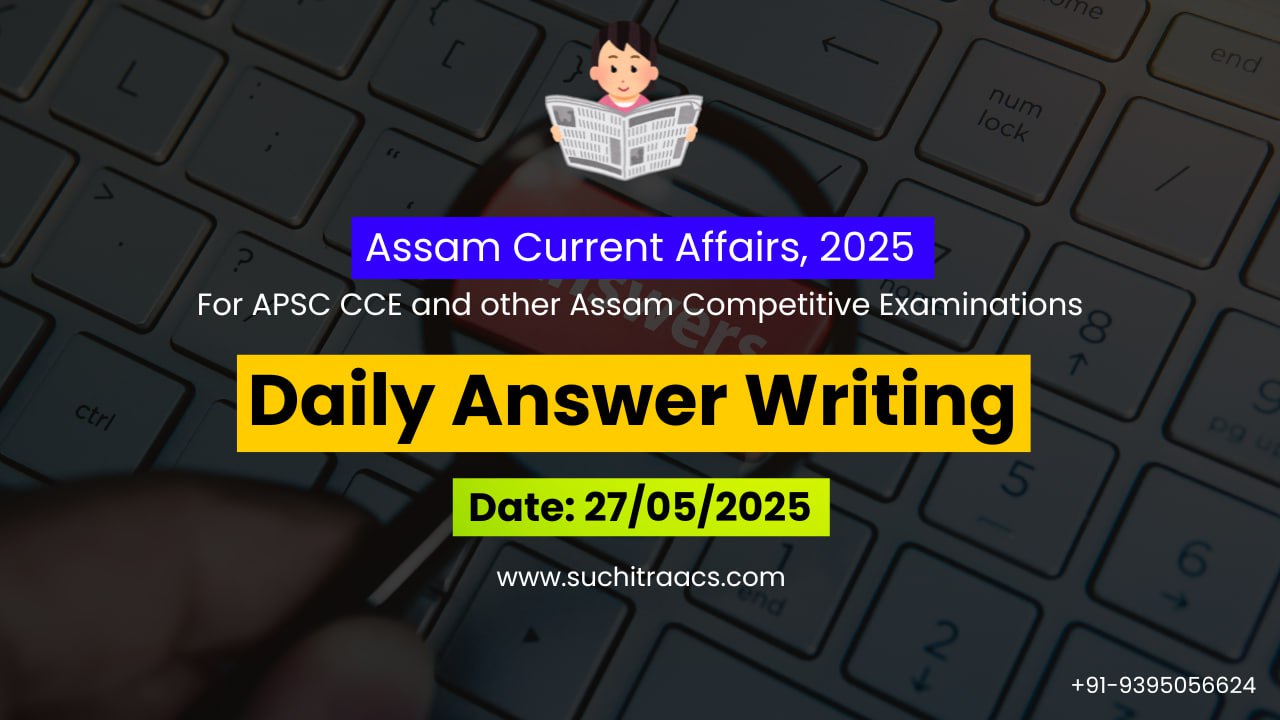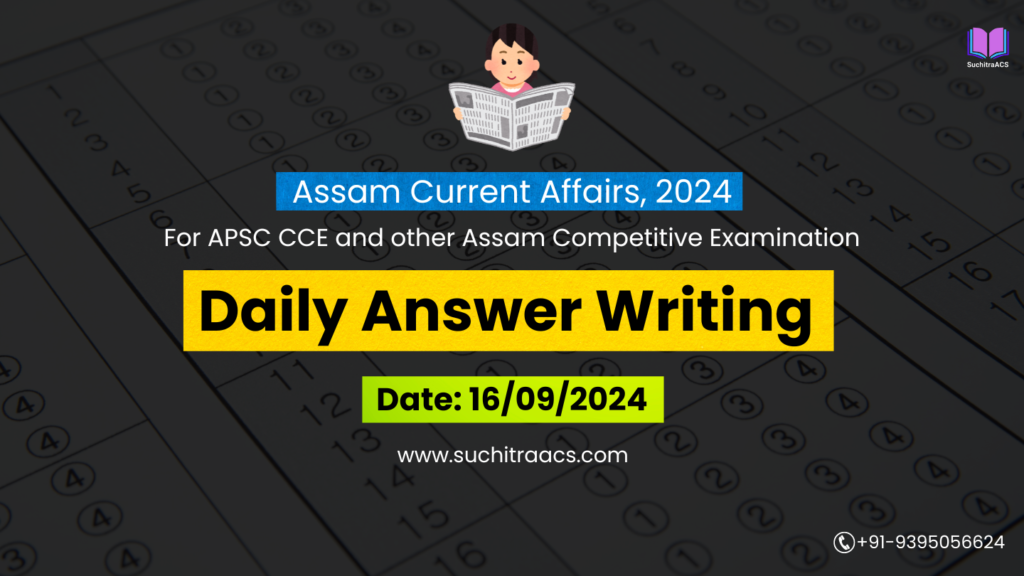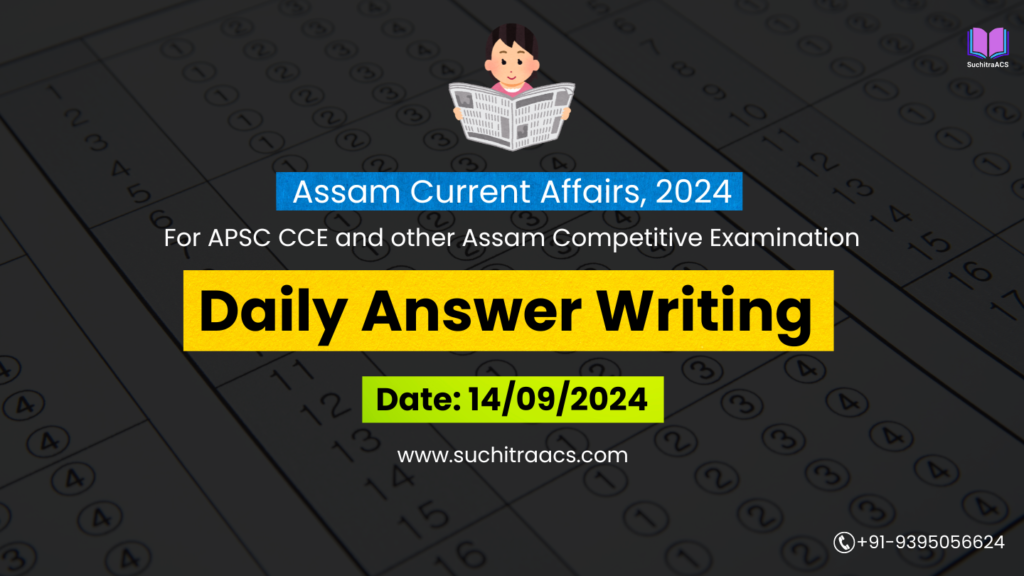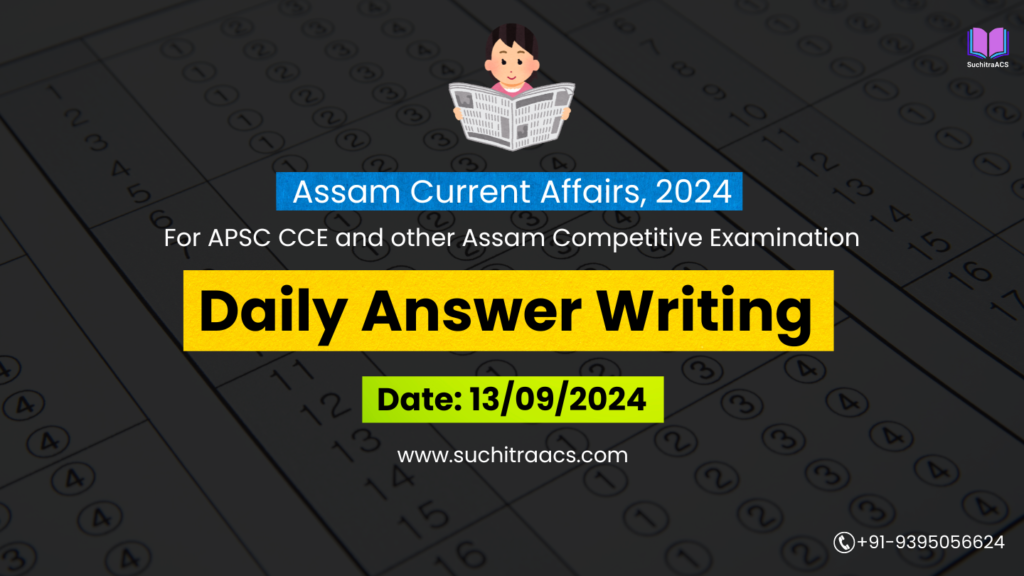APSC Answer Writing (Daily) based on Assam Tribune – 27/05/2025
For APSC CCE and other Assam Competitive examinations aspirants, practicing Daily Answer Writing is vital. This blog covers the most important Main question and its model Answer from the Assam Tribune today (27-05-2025).
Question (GS Paper 3 – Infrastructure/Environment/Energy Security):
“Large hydroelectric projects are essential for India’s energy transition, but they often face environmental, seismic, and social challenges. Critically examine this statement in the context of the Subansiri Lower Hydroelectric Project.”
Model Answer:
Introduction:
Hydropower is a cornerstone of India’s renewable energy strategy, offering clean, dispatchable power and grid stability. However, large hydroelectric projects like the Subansiri Lower Hydroelectric Project (SLHEP) reveal the complex trade-offs between development and ecological sustainability, particularly in fragile geographies like the Eastern Himalayas.
1. Importance of SLHEP in India’s Energy Transition
a. Strategic and Energy Significance
- Installed Capacity: 2000 MW (India’s largest hydropower plant under construction).
- Energy Security: Enhances peak-hour availability in the Northeast and Eastern Grid.
- Clean Energy Goals: Helps India fulfill its Paris Agreement targets by reducing dependence on fossil fuels.
b. Regional Development Impact
- Infrastructure Boost: Augments power evacuation through the NER Power System Improvement Project.
- Employment: Catalyzes job creation and local economic activities in Dhemaji and Lower Subansiri districts.
- Strategic Positioning: Near the India-China border, adds to the infrastructural presence in a sensitive region.
2. Challenges and Controversies Surrounding SLHEP
a. Seismic Vulnerability
- Located in Seismic Zone V—the highest risk zone in India.
- Potential for catastrophic dam failure in case of a strong earthquake.
- NHPC has incorporated seismic-resilient features as per BIS codes, yet concerns remain.
b. Environmental and Ecological Concerns
- Disruption to riverine ecology, affecting fish migration and biodiversity.
- Reduced downstream flow may alter sediment transport, affecting agricultural livelihoods.
- Despite EIA compliance and compensatory afforestation, local biodiversity loss is irreversible.
c. Displacement and Social Impact
- Displacement of communities in Gerukamukh and adjacent areas.
- Inadequate compensation and rehabilitation have triggered grassroots resistance since 2007.
d. Inter-State Disputes
- Environmental concerns have led to friction between Assam and Arunachal Pradesh.
- Flood risks and sedimentation are contentious points without a structured dispute-resolution mechanism.
3. Government Safeguards and Corrective Measures
- Dam Safety Act, 2021: Statutory body (NDSA) oversees structural safety and emergency plans.
- Design Modifications: Enhanced seismic resilience and flood cushioning.
- Stakeholder Consultations: Assam and Arunachal involved in project monitoring.
- Post-Commissioning Monitoring Plans: Real-time data on hydrology and seismicity to be integrated.
4. Way Forward
| Area | Suggested Measures |
| Risk Mitigation | Third-party international audits for seismic and structural safety. |
| Community Inclusion | Benefit-sharing through jobs, subsidized power, and revenue reinvestment. |
| Ecological Safeguards | Upstream-downstream biodiversity monitoring and adaptive river flow releases. |
| Institutional Reforms | Permanent inter-state coordination board for water sharing and dam management. |
| Disaster Preparedness | Mock drills, SDRF-NDMA integration, early warning systems for dam break scenarios. |
Conclusion:
While SLHEP embodies the promise of a greener and energy-secure India, it also underscores the need for responsible hydropower development in ecologically sensitive and seismically active regions. Balancing infrastructure growth with environmental integrity, social justice, and scientific oversight is the only sustainable path forward. If executed prudently, SLHEP can serve as a template for future hydroelectric projects in India’s Himalayan frontier.
✨ Looking for top-quality APSC Mains Guidance with Personalised Mentor?

🔔 Join Our WhatsApp Study Group!
For exclusive access to premium quality content, including study materials, current affairs, MCQs, and model answers for APSC CCE and other Assam competitive exams.
Click here to join: SuchitraACS Study WhatsApp Group
📚 Want to know more about SuchitraACS’s most affordable courses?
Click here to know more: SuchitraACS Courses for APSC CCE and Assam Competitive Examinations




